Photo



Scarlet Witch - Marvel Future Revolution
573 notes
·
View notes
Text
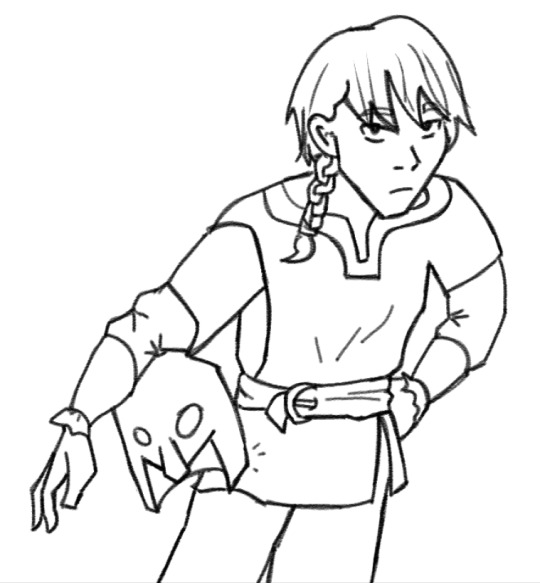
It's Leif Erikson Day so here's a sketch I did of Nor
8 notes
·
View notes
Text
YOU KNOW WHAT BOTHERS ME
when fantasy books describe the cloth of Quant Farmpeople’s clothing as “homespun” or “rough homespun”
“homespun” as opposed to what??? EVERYTHING WAS SPUN AT HOME
they didn’t have fucking spinning factories, your pseudo-medieval farmwife is lucky if she has a fucking spinning wheel, otherwise she’s spinning every single thread her family wears on a drop spindle NO ONE ELSE WAS DOING THE SPINNING unless you go out of your way to establish a certain baseline of industrialization in your fake medieval fantasy land.
and “rough”??? lol just because it’s farm clothes? bitch cloth was valuable as fuck because of the labor involved ain’t no self-respecting woman gonna waste fiber and ALL THAT FUCKING TIME spinning shitty yarn to weave into shitty cloth she’s gonna make GOOD QUALITY SHIT for her family, and considering that women were doing fiber prep/spinning/weaving for like 80% of their waking time up until very recently in world history, literally every woman has the skills necessary to produce some TERRIFYINGLY GOOD QUALITY THREADS
come to think of it i’ve never read a fantasy novel that talks about textile production at all??? like it’s even worse than the “where are all the farms” problem like where are people getting the cloth if no one’s doing the spinning and weaving??? kmart???
82K notes
·
View notes
Text
all the tips I found for drawing a fantasy map are like :) “here’s a strategy to draw the land masses! here’s how to plot islands!” :) and that’s wonderful and I love them all but ??? how? do y'all decide where to put cities/mountains/forests/towns I have my map and my land but I’m throwing darts to decide where the Main Citadel where the Action Takes Place is
95K notes
·
View notes
Text

V.E. Schwab’s advice on creating memorable characters.
27K notes
·
View notes
Text
How to write a character-driven plot

The Character-Driven Plot Wheel
1. Emotions drive actions.
Make your hero act on their deepfelt emotions. This not only adds meaning to their actions, but also helps communicate to readers your hero’s core emotional struggle.
2. Actions trigger consequences.
When your hero acts, give their actions consequences that affect the plot, themselves, and/or the surrounding characters. For example, driven by curiosity, maybe your hero opens Pandora’s box; maybe they act recklessly and someone dies; or maybe they stand up for what they believe in, but at great personal cost. Consequences raise the stakes and empower your hero with agency.
3. Consequences compel change.
Use the consequences of your hero’s actions to create a crucible of growth — challenges and situations that force them to take the next step on their character journey. That step may be forward, or backward, and it may be large or small; but something inside them changes.
4. Change influences emotions.
When a character goes through a change, even a small one, allow it to affect them emotionally. Maybe they feel increasingly frustrated or guilty. Maybe they’re afraid, having just taken another step closer to abandoning their old way of seeing the world. Or maybe they finally feel peace.
Regardless of the form it takes, remember to reflect your hero’s change in their emotions. Then let their emotions drive action, to trigger consequences, which will compel further change.
Lather. Rinse. Repeat.
And there you have it! That’s how you write a character-driven plot.
So what do you say?
Give the wheel a spin.
— — —
Your stories are worth telling. For tips on how to craft meaning, build character-driven plots, and grow as a writer, follow my blog.
13K notes
·
View notes
Photo

Since you all liked Why I Wrote It bingo, I decided to make another variant. Transcript under the cut.
Keep reading
23K notes
·
View notes
Text
Myths, Creatures, and Folklore
Want to create a religion for your fictional world? Here are some references and resources!
General:
General Folklore
Various Folktales
Heroes
Weather Folklore
Trees in Mythology
Animals in Mythology
Birds in Mythology
Flowers in Mythology
Fruit in Mythology
Plants in Mythology
Folktales from Around the World
Africa:
Egyptian Mythology
African Mythology
More African Mythology
Egyptian Gods and Goddesses
The Gods of Africa
Even More African Mythology
West African Mythology
All About African Mythology
African Mythical Creatures
Gods and Goddesses
The Americas:
Aztec Mythology
Haitian Mythology
Inca Mythology
Maya Mythology
Native American Mythology
More Inca Mythology
More Native American Mythology
South American Mythical Creatures
North American Mythical Creatures
Aztec Gods and Goddesses
Asia:
Chinese Mythology
Hindu Mythology
Japanese Mythology
Korean Mythology
More Japanese Mythology
Chinese and Japanese Mythical Creatures
Indian Mythical Creatures
Chinese Gods and Goddesses
Hindu Gods and Goddesses
Korean Gods and Goddesses
Europe:
Basque Mythology
Celtic Mythology
Etruscan Mythology
Greek Mythology
Latvian Mythology
Norse Mythology
Roman Mythology
Arthurian Legends
Bestiary
Celtic Gods and Goddesses
Gods and Goddesses of the Celtic Lands
Finnish Mythology
Celtic Mythical Creatures
Gods and Goddesses
Middle East:
Islamic Mythology
Judaic Mythology
Mesopotamian Mythology
Persian Mythology
Middle Eastern Mythical Creatures
Oceania:
Aboriginal Mythology
Polynesian Mythology
More Polynesian Mythology
Mythology of the Polynesian Islands
Melanesian Mythology
Massive Polynesian Mythology Post
Maori Mythical Creatures
Hawaiian Gods and Goddesses
Hawaiian Goddesses
Gods and Goddesses
Creating a Fantasy Religion:
Creating Part 1
Creating Part 2
Creating Part 3
Creating Part 4
Fantasy Religion Design Guide
Using Religion in Fantasy
Religion in Fantasy
Creating Fantasy Worlds
Beliefs in Fantasy
Some superstitions:
Read More
#i always go through lists like this later and none of the links work#lets see how this one goes#mythology
313K notes
·
View notes
Text
Fantasy Guide to Royal Households and How they Work
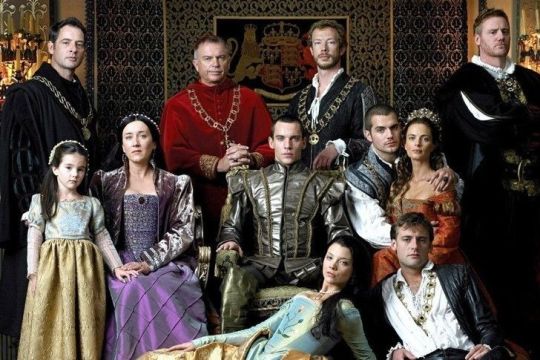
When I say Households, I mean the entourage that follows around the royal family. The household went everywhere with them to care for their needs from the people who would empty their chamber pots to their noble companions. Most royal households are basically the same as noble ones, only on grander scale. Every royal had a household and an entourage as well as every noble at court.
Palace Personnel ~ The Commons
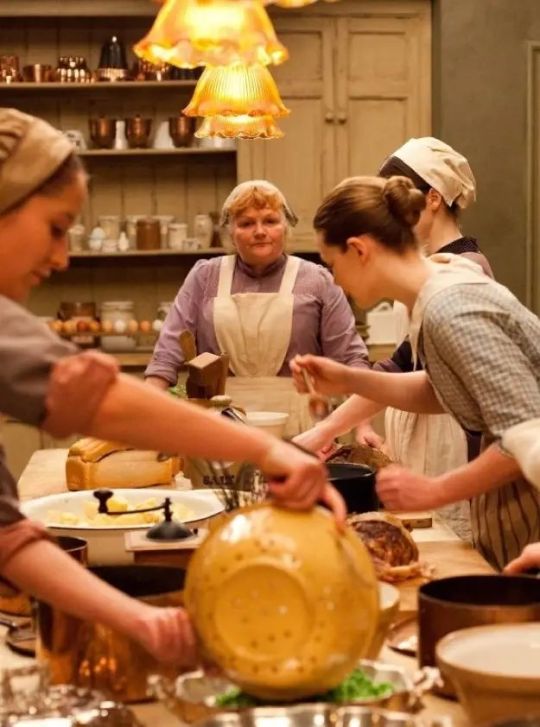
The commons were an intregal part of every household. They made up perhaps 80% of the work force. Royal courts were often on the road and never spent more than a few months at every palace. The court was constantly moving. Some positions were not permanent, meaning certain servants did not travel with the court because they were employed at the palace only. They would be paid by the Monarch’s paymaster.
Scullion: The scullion was a relatively easy position to fill so they were often changed as the court went from palace to palace. They would be responsible for scrubbing and cleaning the servants quarters and the kitchens. They would scrub floors with lye, scour pots with sand, sweep put the fireplace and clean up after the other servants. They were the first to rise in a castle and tasked to light all the fires in the kitchens. Scullions would just be employed to the palace and serve a multitude of chambers
Laundress: The laundress was responsible for the cleaning of anything made of fabric in the household. Since they are handling unmentionables, they knew what happened behind closed bedchamber doors. They knew when the King visited the Queen or hadn’t, they knew when marriages were consummated or not and they knew when the Queen and royal women were not pregnant. They often sold secrets to pad their pockets. Laundresses might be permanent staff but sometimes not.
Minstrels: The minstrel was a commoner hired to play an instrument or sing for the entertainment of the royal. A royal might staff a few at a time but they would always have one on hand. The minstrel would likely come with their masters as they travelled. The minstrel might serve the main royal household but a royal might retain their own.
Cook: The cook was one of the most important servants in the household. They would have the task of overseeing the running of the kitchens and keeping supplies in order. They would likely be on call at all times. Henry VIII’s cook was often woken in the night because his royal master wanted a midnight snack. The cook was a valued member of the household and would have been highly sought after if they were a very skilled cook. They would have travelled with the joint. Cooks were apart of the greater royal household but often royals retained private cooks for their own use.
Maidservant: The maidservant cleans the castle. She would sweep the floors, scrub them, empty the chamberpots, get rid of the ashes from the fire and ready the fire for later. She would make up the bed or strip it for the laundresses. She would wash anything that needed washing including furniture and ornaments. She was likely not a travelling servant and would be strictly employed at a single palace.
Jester: The jester was the hired entertainer. Working under the master of revels, the jester had the daunting task of making the monarch and their family laugh. They would tell jokes, tell stories, cause havoc in the court for laughs and lighten the mood. The most successful jester of all time was Will Somers, jester to Henry VIII. Will broke bad news to the infamously bad tempered monarch and got away with things that would have sent others to the block. Will survived most of Henry’s reign, his head intact. Jesters would be apart of the main household though each royal might have one of their own.
Positions within the Royal Household ~ Noble

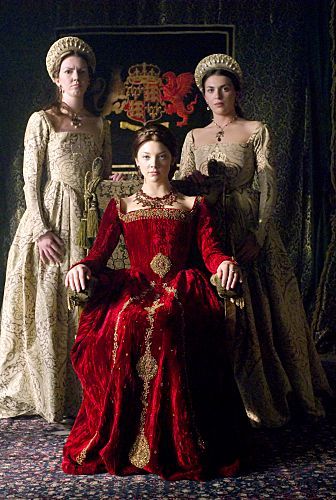
Nobility were always welcomed at court. They eat at court, slept at court and were cared for by the monarch. Some nobles had to sing for their supper and most were hired as royal servants. They weren’t exactly scrubbing floors and would be paid handsomely with land that would generate wealth for them
The Steward/Seneschal: This person was the head of the royal’s staff. They would have the task of running the lands and servants their master or mistress. The steward served as a backup and assistant in all the tasks even representing their master or mistress when they were unavailable. Would be a high ranking noble. Each royal household would have them.
Treasurer of the Household: The treasurer was the accountant and pay master. They would be in charge of ensuring debts were settled, wages were paid and the household was running within the budget. This was a coveted position because it gave the treasurer insight into the financial situations of the royals. Such info was wroth its weight in gold. Each royal would have one.
Usher: The Gentleman Usher would be in charge of escorting guests into the royal chambers and into the royal presence. They would act as a go between their royal master/mistress and the guest often going back and forth with messages. It was just as coveted as the position of chamberlain but with less responsibilities.
Master of Horse: The Master of Horse was in charge of seeing to the horses of their master. They would oversee the grooms or the stableboy/hands who were employed at the stables to actually care for the horses. The master of horse would ensure that the stables were in order and the horses were up to parr in order to bear royalty across the kingdom. Each royal would have one but there would a main one who acted as overseer.
Master of the Wardrobe/Mistress of the Robes: These are the nobility who are employed to look after the clothes of the royal they serve. This would mainly involve a managerial position, overseeing the inventory of the royal wardrobe (a warehouse like building that housed the clothing) and placing orders for new clothes. It was a tidy job that rarely involved getting the hands dirty. Each royal would have one.
Chamberlain/Valet: The chamberlain is employed to look after the Lord’s bedchamber. This was the most sought out position as they effectively were the gateway into the royal presence. Their main task was making sure their boss was comfortable and happy. Could be a well born commoner or a noble. Each royal would have one.
The Page: All royal households had pages. They would be a young noble boy about seven years old sent to their royal master. He would be in charge of tidying up after the lord, carrying messages to other servants and occupants of the castle and serving him at meals. Unlike others on the list, the page would not be paid. His experience was his payment as he would learn the running of a court and how to be courtier. Each royal would have one.
Squires: Squires were like pages though they only served the men. They would accompany their royal master to battle, look after his armour and mail, ensure that his lord’s horse was saddled, caring for their master’s weapons. The squire would always be a young nobleman on the cusp of becoming a knight.
Governess: The governess is a noblewoman woman employed to oversee the Monarch’s children’s household. She would be the first teacher a royal child would have and would oversee the nursemaids who would have care of the physical person of the child. She would be appointed when the child was four or five. Notable governesses include Katherine Swynford (wife of John of Gaunt and mother to the Beaufort line), Margaret Pole (wife of Tudor Loyal Sir Richard Pole, sister of the last York heir Edward of Warwick, daughter of George Duke of Clarence and niece to King Edward VI and Richard III), Kat Ashley, Margaret Bryan, Madame de Maintenon and Baroness Lehzen. Most unmarried Princesses retained their governesses while Princes generally outgrew their governesses after they were breeched.
Gentlemen of the Privy Chamber: They were the male companions of a King or Prince, sort of like ladies in waiting but manly. They would accompany the King or Prince everywhere they would go and shared duties with Groom of the Stool (royal toilet paper dispenser) and the Chief Gentleman of the Chamber (overseeing the staff and maintaining the chamber). They would help their master get ready, serve him at the table and organize hunting and games to keep him entertained. Gentlemen and companions where often chosen for their connections as well as their master’s own opinion. Henry VIII’s gentlemen included: Sir William Compton (ward of Henry VII and heir to rich lands), Sir Henry Norris (the grandson of William Norris who fought with Henry’s father at Stroke and a relation to the Yorkists Lovells), Sir Anthony Denny (son of Sir Edmund Denny Baron of the Exchequer) Sir Michael Stanhope (brother in law to Edward Seymour, Duke of Somerset), Charles Brandon (ward of Henry VII and son of Tudor Loyalists)
Ladies in Waiting and Maids in Waiting or Maids of Honour: These are the female attendants to the Queen or Princess. Ladies in Waiting were married while the Maids were unmarried. They would have to attend their mistress wherever she went, help her get ready, keep her chambers in order, write letters for the Queen and maintaining her honour. They were chosen for their connections. Using Katherine of Aragon as an example, her Ladies in Waiting included: Maria de Salinas (daughter of Juan Sancriz de Salinas secretary to Isabella, Princess of Portugal and a Spanish courtier in the service to Katherine’s parents, wife of Baron Willoughby de Ersby), Elizabeth Howard (the daughter of Thomas Howard, 2nd Duke of Norfolk, sister to Thomas Howard, 3rd Duke of Norfolk and wife to Thomas Boleyn, ambassador to France), Anne Hastings (daughter of William Hastings, 1st Baron Hastings, wife to George Talbot, Earl of Shrewsbury and Lord Steward.), Agnes Tilney (wife to Thomas Howard, Earl of and 2nd Duke of Norfolk.), Elizabeth Scrope (wife of John de Vere, Earl of Oxford, a loyal Tudor lord), Margaret Scrope (wife of Sir Edmund de la Pole, Earl of Suffolk cousin to the King), Anne Stafford (sister of the Duke of Buckingham, married Sir George Hastings, Earl of Huntington and daughter of Henry Stafford, 2nd Duke of Buckingham (cousin to the King) and Lady Katherine Woodville (sister of King Henry VIII’s grandmother and his great aunt by her marriage), Elizabeth Stafford (sister to Anne Stafford wife Robert Radcliffe, Lord Fitzwalter and Earl of Sussex around). Their connections are what got them their places and you can see why they were chosen.
Accommodation

Accommodation can be a difficult thing to sort both as a writer and a steward. You might have a palace of 200+ bedchambers in which you must house a staff of 500-/+, a varying amount of nobles, the royal family (of a varying amount) and their own households. When assigning rooms it is best to think of a Russian nesting doll. Start from the inside and work your way to the outside.
The best rooms go to the monarch, their consort and their children/siblings/parent(s). These chambers would include the bedroom, a drawing room/ common area, a privy, a closet (a small chamber that can be used for prayer or work). They would be furnished with the best cloth, the best candles and whatever furniture brought by the resident since most royal courts travelled from palace to palace. They will also have chambers for their personal servants such as ladies in waiting and grooms.
The second best set of rooms would go to the highest ranking nobles/people in the court. These rooms would be less fancy and a little smaller. These would be given to from titled nobility descending from those of Ducal rank (Dukes/Duchesses) or even members of the council such as Thomas Cromwell in Tudor times.
The next set would be considerably smaller, perhaps minus a closet or a drawing room. Given to lower nobility.
The next level of chambers would be smaller perhaps only the bedroom and a common area given to minor nobles.
The last set of rooms would be small and only hold enough room for a bedroom. Servants would have to sleep on the ground on pallets beside their masters.
Any other guests at court would have to stay at off-site locations around the palace in the city. Some nobles at houses around major palaces just in case they arrived late or were kicked out of court.
17K notes
·
View notes
Text
Dungeon Master Essentials
I decided to make a list of DM stuff that I personally use or think are important to know when it comes to being a DM. So here’s my list:
Medieval Fantasy City Generator: This generator is now my LIFE. It generates incredibly complex cities with good customization. (Thanks to plantkat for sharing this site in their post here)
Naming Your Towns/Cities: Now that you’ve made your city, time to name it and give it some character! This post contains lots of great information.
Index Cards Rule: Fuckyeahdnd shared a SUPER convenient way of keeping track of turns and HP in combat. I use this system now for every single session I run.
Tricks & Traps: I am AWFUL at coming up with good Dungeon traps and challenges, this PDF includes some incredible ideas. The original poster, Courtney C. Campbell also runs a blog where they share tons of great stuff. (Thanks to we-are-rogue for sharing the PDF in their post here)
Playing Different Types of Characters: Writeinspiration has a masterpost on how to write/play lots of different types of characters.
Unique NPC Jobs: Lauraharrisbooks wrote a list of different Fantasy Jobs which can help populate your world with some unique characters! Another similar post by Thewritershandbook also covers Common Occupations in the Middle Ages.
Developing Characters by Threes: Monticusrex’s method of creating characters help you really flesh out who they are. Useful for Players and DM’s.
Troublesome Players? Speak Up: Dicebound brings up an incredibly great point. If someone is being a jerk, speak up and call them out. This is especially important and relevant now to crush awful behavior before it even has a chance to show it’s ugly face.
List of D&D Resources: And finally, pretty much anything you might need for D&D. (Character stuff, spells, online communities/ways to play, etc..) A lot of people contributed to this post but thank you Mushroomancy for posting the original list.
Donjon: And finally, this site is a great resource for looking up Spells and Monsters along with tons of other generators. Not every single Spell or Monster is on here, but most are listed.
(I tried to give credit to the original posters or the actual URL for websites, unless those sites or URLs were no longer active)
53K notes
·
View notes
Text
@trustmeimageographer reblogged your post and added:
Hi I’m a fantasy writer and now I need to know what potatoes do to a society
They drastically increase peasant food security and social autonomy.
The main staple of medieval agriculture was grain–wheat, barley, oats, or rye. All that grain has to be harvested in a relatively short window, about a week or two. It has to be cut down (scythed), and stored in the field in a safe and effective way (stooked); then it has to be brought to a barn and vigorously beaten (threshed) to separate the grain from the stalks and the seed husks. It can be stored for a few weeks or months in this form before it spoils or loses nutritional value.
Then it has to be ground into flour. In the earlier middle ages, peasants could grind their own flour by hand using small querns, but landlords had realized that if they wanted to get more money out of their peasants, it was more effective for the entire village to have one large mill that everyone used. Peasants had to pay a fee to have their flour ground–and it might say something that there are practically no depictions of millers in medieval English literature in which the miller is not a corrupt thief.
Then the flour has to be processed to make most of its nutrients edible to humans, which ideally involves yeast–either it’s made into bread which takes hours to make every time (and often involves paying to use the village’s communal bread oven) and spoils within a few days, or it’s made into weak ale, which takes several weeks to make, but can keep for several months.
Potatoes, in comparison…
Potatoes have considerably more nutrients and calories than any similar crop available in medieval Europe–they beat turnips, carrots, parsnips, beets, or anything else all to heck. I don’t know if they beat wheat out for calories per acre, but practically…
When you dig a potato out of the ground (which you can do at any time within a span of several months), you can bury it in the ashes of a fire for an hour, or you can boil it in water for 20 minutes.
Then you eat it. Boom. Done. (I mean, if you’re not fussy, you could even eat them raw.)
You store the ones you don’t want right now in a root cellar and plant some of them in the spring to get between a fivefold and tenfold return on your crop.
Potatoes don’t just feed you–they free you. Grain-based agriculture relies on lots of people working together to get the work done in a very short length of time. It relies on common infrastructure that is outside the individual peasant’s control. The grain has to be brought to several different locations to be processed, and it can be seized or taxed at any of those points. It’s very open to exploitation.
TW: Genocide The Irish Potato Famine happened because the English colonizers of Ireland demanded rents and taxes that were paid in grain, and it ended up that you didn’t really get to keep much of the grain you grew. So the Irish farmed wheat in fields to pay the English, and then went home and ate potatoes from their gardens. And then, because they were eating only one specific breed of potatoes, a blight came through and wiped all their potatoes out, and then they starved. So English narratives about the potato famine tended to say “Oh yes, potato blight, very tragic,” and ignore the whole “The English were taking all the grain” aspect, but the subtext here is: Potatoes are much harder to tax or steal than grain.
So… yeah. I realize it’s very counterproductive to explain to everybody why I’m always like “OMG POTATO NO” when I wish I could just chill out and not care about this. But the social implications of the humble potato are rather dramatic.
27K notes
·
View notes
Text
background: physician
skill proficiencies: medicine, investigation
tool proficiencies: herbalism kit
equipment: a book of plants and their uses, an herbalism kit, a set of physician’s clothes, burn cream, and a letter of commendation from an important personage you treated.
Feature: Bedside Manner
When you treat your patients, you are able to use your professional skills to assess the situation with great success. As you ask diagnostic questions and examine wounds, you gain the patient’s trust, and they share more information about what they witnessed; you are also able to observe helpful clues in the patient’s wounds and conditions.
Specialty: As a professional physician, you have general knowledge of treating many conditions. Still, you take special pride in your mastery of one area of medicine.
Obstetrics and midwifery
Surgery
Chronic conditions and physical therapy
Communicable diseases and plague
Triage
Palliative care
Suggested Characteristics:
Personality Traits (d8)
I am a sensitive soul with strong empathy for the pain of others.
I am brusque with my patients. I won’t waste time coddling them when there’s work to be done.
I take intense pride in my knowledge and study, and I don’t react well when others aren’t deferential.
I rely on my humble beginnings and rustic apprenticeship to bond with others.
I treat every new illness as an exciting challenge, sometimes forgetting my patients’ feelings in the process.
I apprenticed with a great master who taught me many unorthodox methods.
I am easily distracted from my work by emotions and small inconveniences.
I am intensely germaphobic. Grime and bodily fluids are especially heinous to me and I keep everything meticulously clean.
Ideals (d6)
Pro bono. All people have a right to healthy lives, regardless of who they are or their ability to pay. (Good)
Influence. When you have power over whether someone lives or dies, you should get whatever you want. (Evil)
Freelance. No amount of study can replace hands-on experience. Accreditation is a waste of time at best and a con at worst. (Chaotic)
Healing. If someone can help those in pain and suffering, it is their obligation to do it. (Lawful)
Hippocratic Oath. Do No Harm is the first and most important principle of life. (Neutral)
Perfection. Anyone who holds life in their hands should be inscrutable and make no mistakes. (Any)
Bonds (d6)
A conman scammed someone I love with a snake oil cure that led to their death. I want to hunt them down and make them pay for the misery they’ve caused.
Losing a patient is the worst thing I can imagine. I would do anything to prevent that.
My family gave everything to send me to get my education. I can’t let them down.
I still bear a grudge against someone who always outperformed me in medical school, and I can’t stand being shown up like that.
I took an oath not to harm anyone, and I stand by that oath through thick and thin.
I’ve seen enough people fade slowly from incurable illness or mortal wounds. I just want a quick, painless death.
Flaws (d6)
I get very involved in the personal lives of people I barely know, especially my patients.
I went to unpleasant lengths to study medicine, and I fear my decisions will catch up to me.
I don’t trust magical healing. I fear my body will lose its resilience if I rely too much on potions and spells.
I’ll do anything to save someone under my care, whether it’s ethical or not.
My massive ego gets in my way; I always believe I’m right in matters of health, even when there is proof to the contrary.
I use and sometimes abuse the medicines I brew for my own enjoyment.
54 notes
·
View notes
Photo

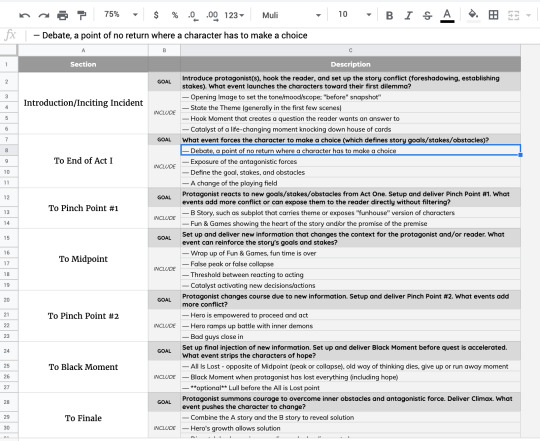
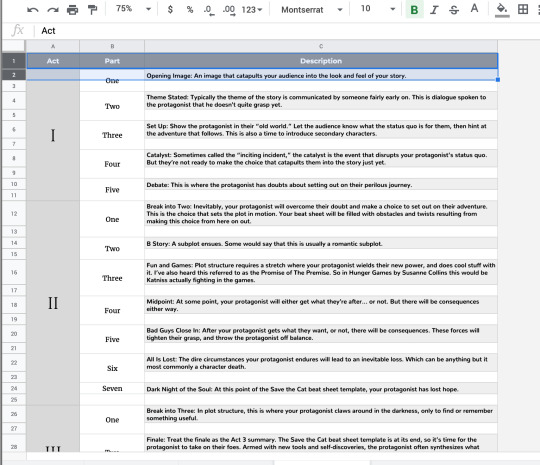
3 free beat sheets in a google docs spreadsheet
Beat sheets can seem unnecessary, especially when there are so many ones that differ from each other, but really they all boil down to one purpose, which is providing effective story structure. I took the time to type out 3 different beat sheets in Google Spreadsheets that I find to be most helpful in planning and outlining a story/novel/movie, and hopefully somebody can benefit from it. To use it, click the link above, then go to File > Make a copy. Then you can fill the beats in yourself (on sheets 1 and 3, the 2nd is just informational mostly). Please like and/or reblog if you use this or find it helpful!
267 notes
·
View notes



